 |
 |
 |
| |
Preemptive DAA Therapy in Donor HCV-positive to Recipient HCV-negative Cardiac Transplantation
|
| |
| |
Reported by Jules Levin
AASLD 2018 Nov 9-13 SF
Emily Bethea, Kerry Gaj, Jenna Gustafson, Amanda Dugal, Sarah Shao, Thais Gift, Dan Pratt, Irun Bhan, Greg Lewis, Raymond T Chung
Liver Center, Heart Center, Transplant Center, Pharmacy Division
Massachusetts General Hospital
Background:
Donor heart availability continues to limit the number of cardiac transplants performed in the United States. While heart failure prevalence continues to rapidly rise, the number of annual transplants has remained unchanged over the last decade. In Region 1, there were 262 patients awaiting heart transplant and a total of 97 cardiac transplants performed in 2016. During the same one-year-period there were 41 HCV-positive hearts that met standard criteria for cardiac donation that were discarded based on HCV status. These HCV-infected hearts are an underutilized resource. Our aim was to determine if preemptive administration of pan-genotypic direct-acting antiviral therapy could be used to prevent the development of chronic HCV infection in HCV-negative cardiac transplant recipients receiving HCV-infected donor hearts.
Methods:
In this single center proof of concept trial 25 patients were enrolled and their status on the cardiac transplantation waitlist updated to reflect a willingness to accept an HCV-positive donor heart. If an enrolled patient received an offer for an HCV nucleic acid testing (NAT)-positive donor heart, they were started on preemptive glecaprevir-pibrentasvir (GP) therapy and administered their first treatment dose prior to transport to the operating room. Each patient then completed an 8-week course of GP therapy post-transplant. HCV viral load monitoring was performed during treatment and following therapy completion to ensure both adequate viral suppression and achievement of sustained virologic response.
Results:
Eight patients have undergone transplant with an HCV-positive donor heart (Table). One underwent a simultaneous heart-kidney transplant. Four of these heart transplants were performed on long-term inpatients with immediate life-threatening conditions. All patients achieved viral suppression with undetectable or nonquantifiable HCV RNA by day 7 following transplant. There have been no treatment failures to date, and all HCV viral load checks following hospital discharge have remained negative. No adverse drug reactions or interactions have necessitated a lapse or cessation of therapy. Preliminary analysis indicates a decrease in time to transplant in patients willing to accept an HCV-positive heart, and post-transplant outcomes have been excellent in this small cohort of patients.
Conclusion:
Preemptive administration of pan-genotypic direct-acting antiviral therapy results in rapid viral suppression and the prevention of chronic HCV infection in HCV-negative cardiac transplant recipients receiving HCV-infected donor hearts. With the rising HCV incidence and growing number of HCV-positive donors, there is a time sensitive and critical need to document both efficacy and detailed logistics surrounding successful use of HCV-positive organs. This strategy has the potential to decrease heart transplant wait times and improve post-transplant outcomes.
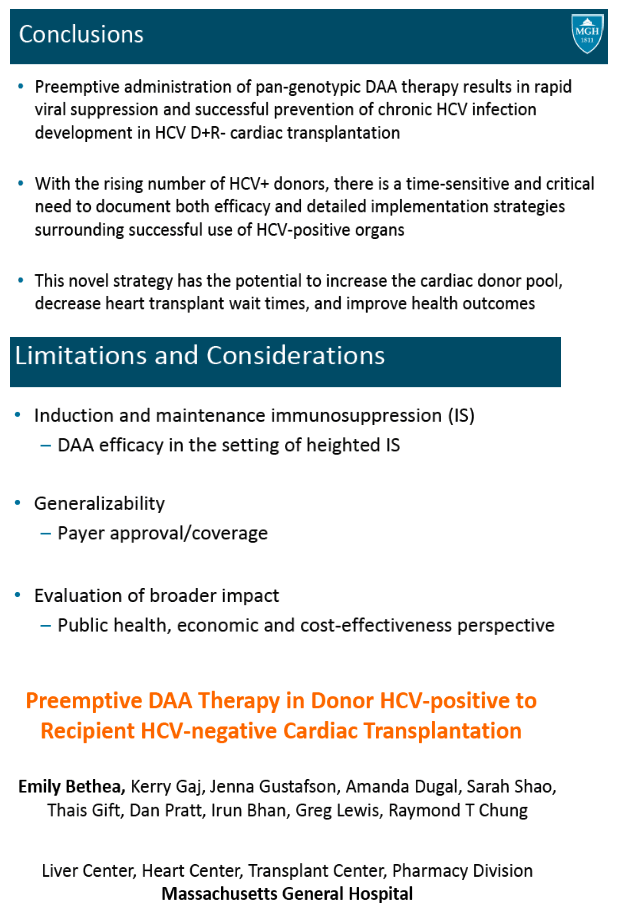
program abstract
Background:
Donor heart availability continues to limit the number of cardiac transplants performed in the United States. While heart failure prevalence continues to rapidly rise, the number of annual transplants has remained unchanged over the last decade. In Region 1, there were 262 patients awaiting heart transplant and a total of 97 cardiac transplants performed in 2016. During the same one-year-period there were 41 HCV-positive hearts that met standard criteria for cardiac donation that were discarded based on HCV status. These HCV-infected hearts are an underutilized resource. Our aim was to determine if preemptive administration of pan-genotypic direct-acting antiviral therapy could be used to prevent the development of chronic HCV infection in HCV-negative cardiac transplant recipients receiving HCV-infected donor hearts.
Methods:
In this single center proof of concept trial 25 patients were enrolled and their status on the cardiac transplantation waitlist updated to reflect a willingness to accept an HCV-positive donor heart. If an enrolled patient received an offer for an HCV nucleic acid testing (NAT)-positive donor heart, they were started on preemptive glecaprevir-pibrentasvir (GP) therapy and administered their first treatment dose prior to transport to the operating room.
Each patient then completed an 8-week course of GP therapy post-transplant. HCV viral load monitoring was performed during treatment and following therapy completion to ensure both adequate viral suppression and achievement of sustained virologic response.
Results:
Eight patients have undergone transplant with an HCV-positive donor heart (Table). One underwent a simultaneous heart-kidney transplant. Four of these heart transplants were performed on long-term inpatients with immediate life-threatening conditions. All patients achieved viral suppression with undetectable or nonquantifiable HCV RNA by day 7 following transplant. There have been no treatment failures to date, and all HCV viral load checks following hospital discharge have remained negative. No adverse drug reactions or interactions have necessitated a lapse or cessation of therapy. Preliminary analysis indicates a decrease in time to transplant in patients willing to accept an HCV-positive heart, and post-transplant outcomes have been excellent in this small cohort of patients.
Conclusion:
Preemptive administration of pan-genotypic direct-acting antiviral therapy results in rapid viral suppression and the prevention of chronic HCV infection in HCV-negative cardiac transplant recipients receiving HCV-infected donor hearts. With the rising HCV incidence and growing number of HCV-positive donors, there is a time sensitive and critical need to document both efficacy and detailed logistics surrounding successful use of HCV-positive organs. This strategy has the potential to decrease heart transplant wait times and improve post-transplant outcomes.
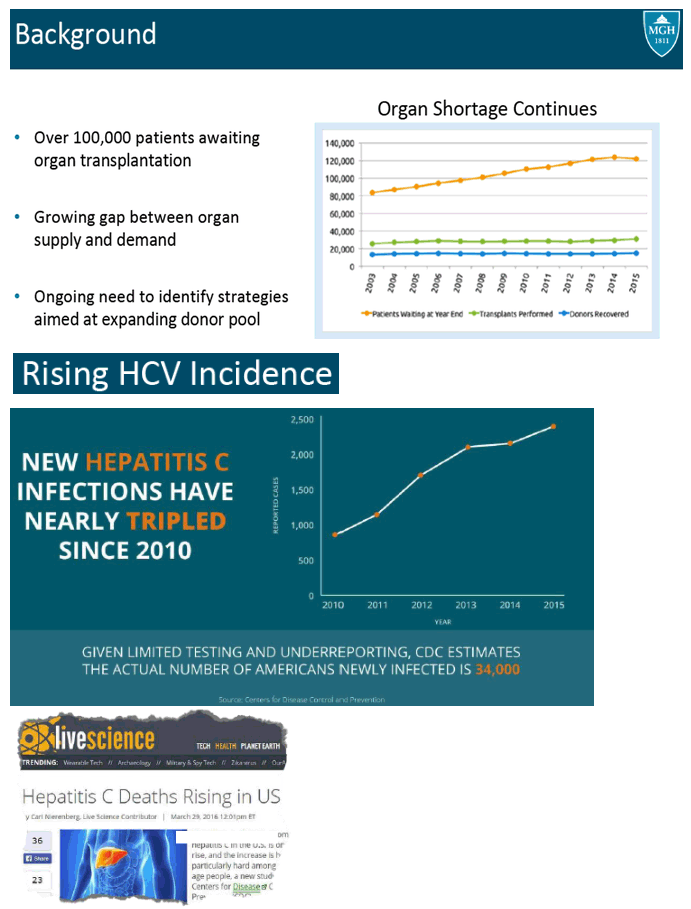
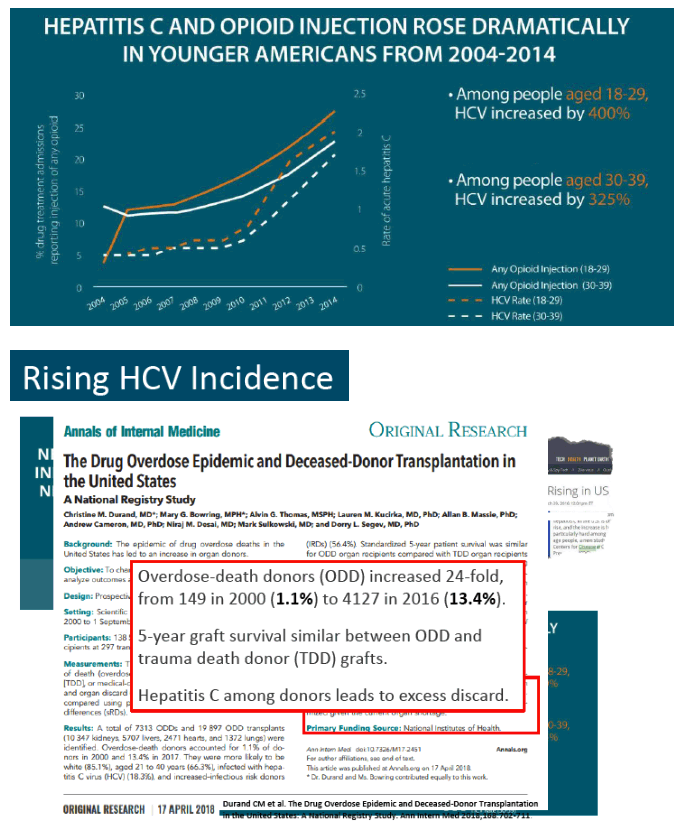
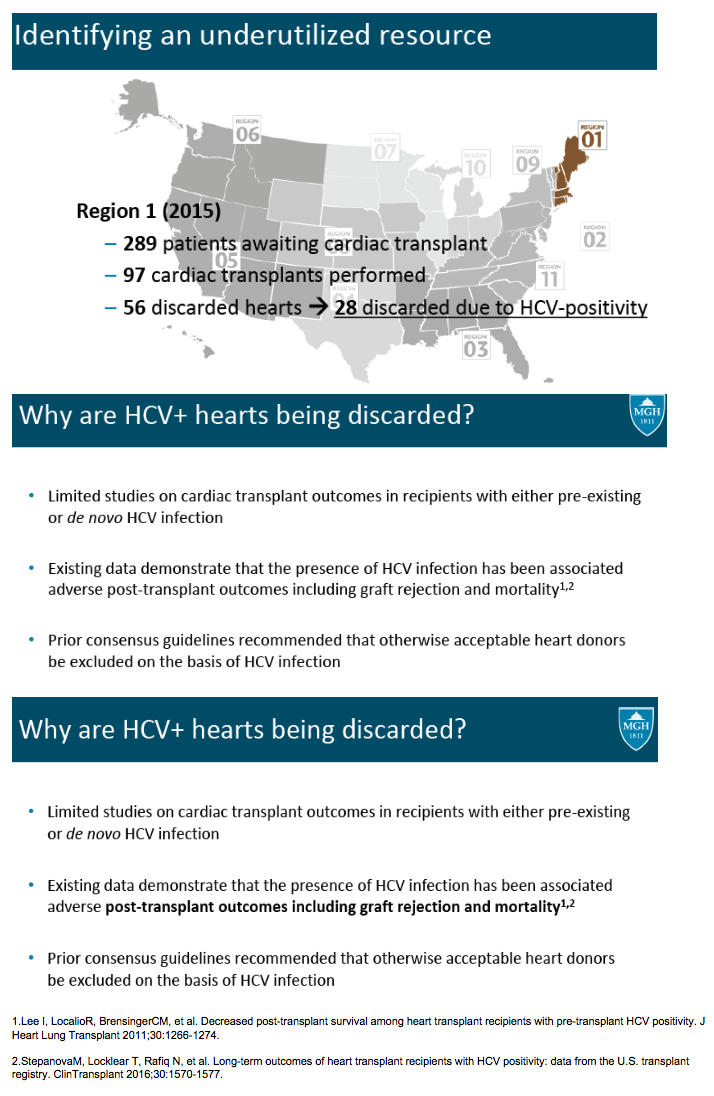
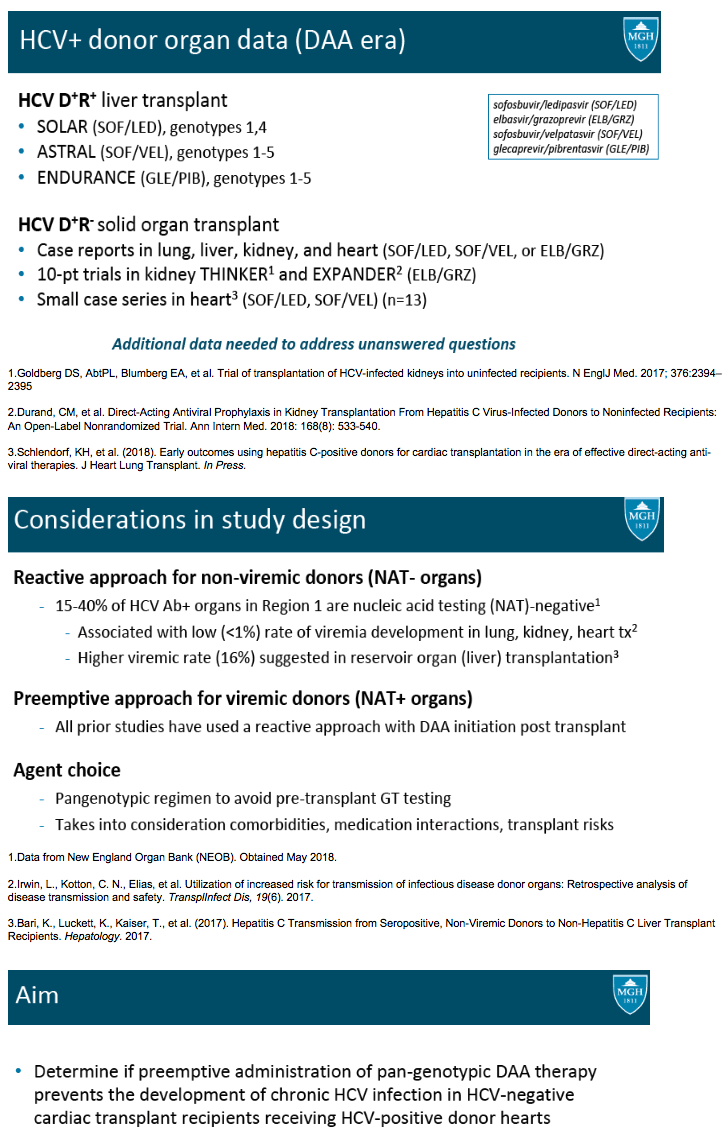
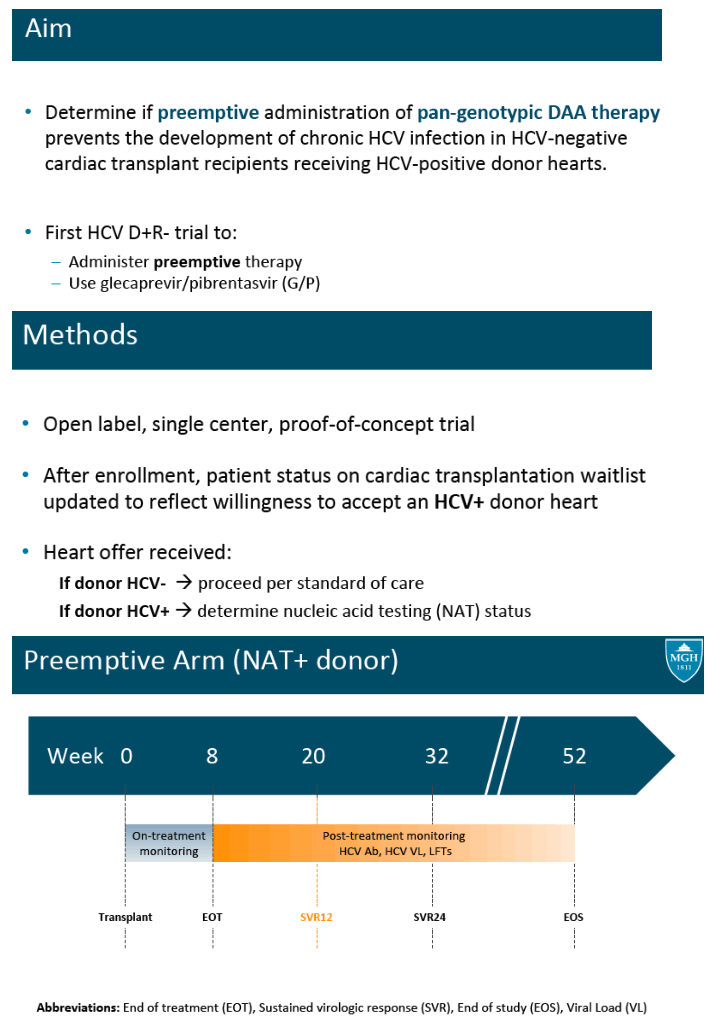
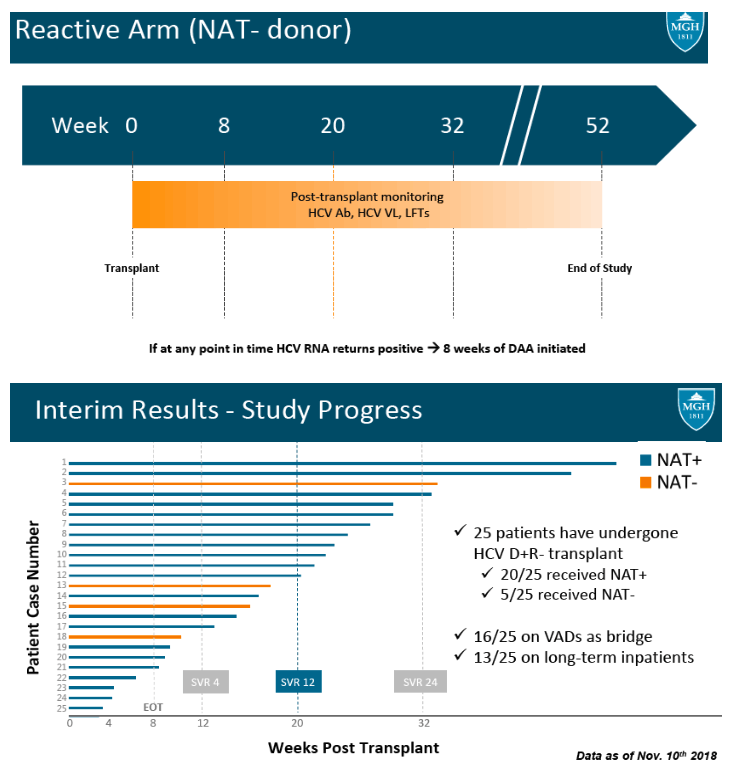
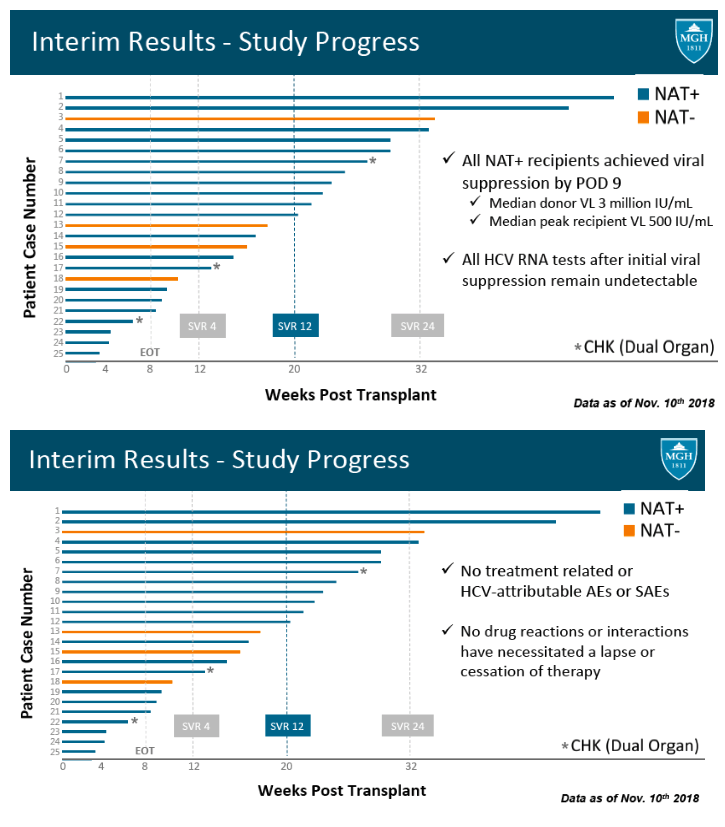
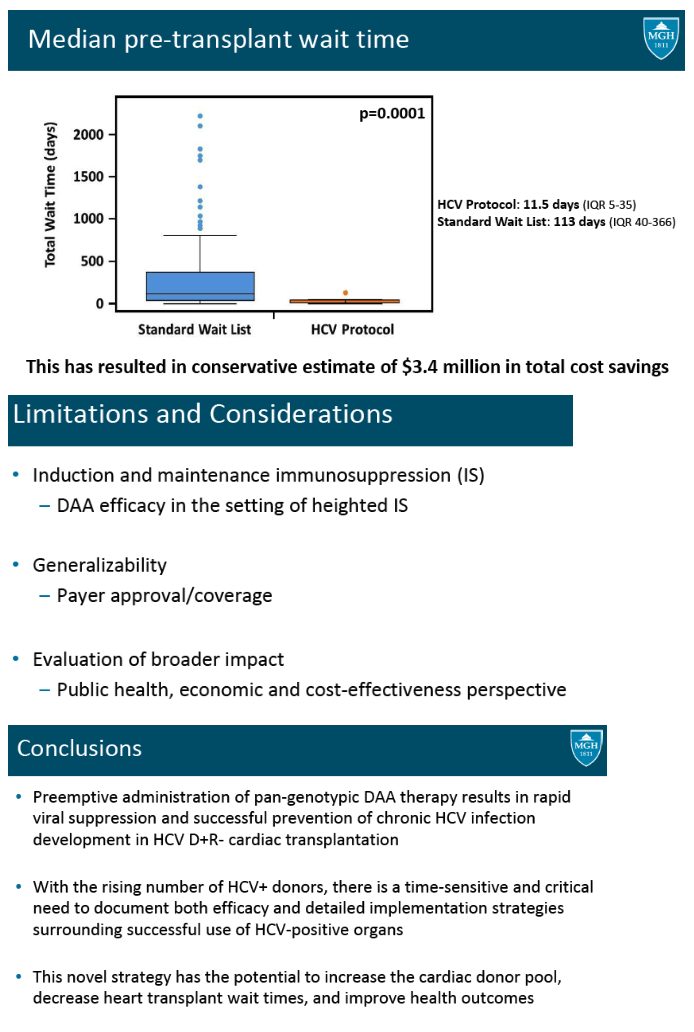
|
| |
|
 |
 |
|
|